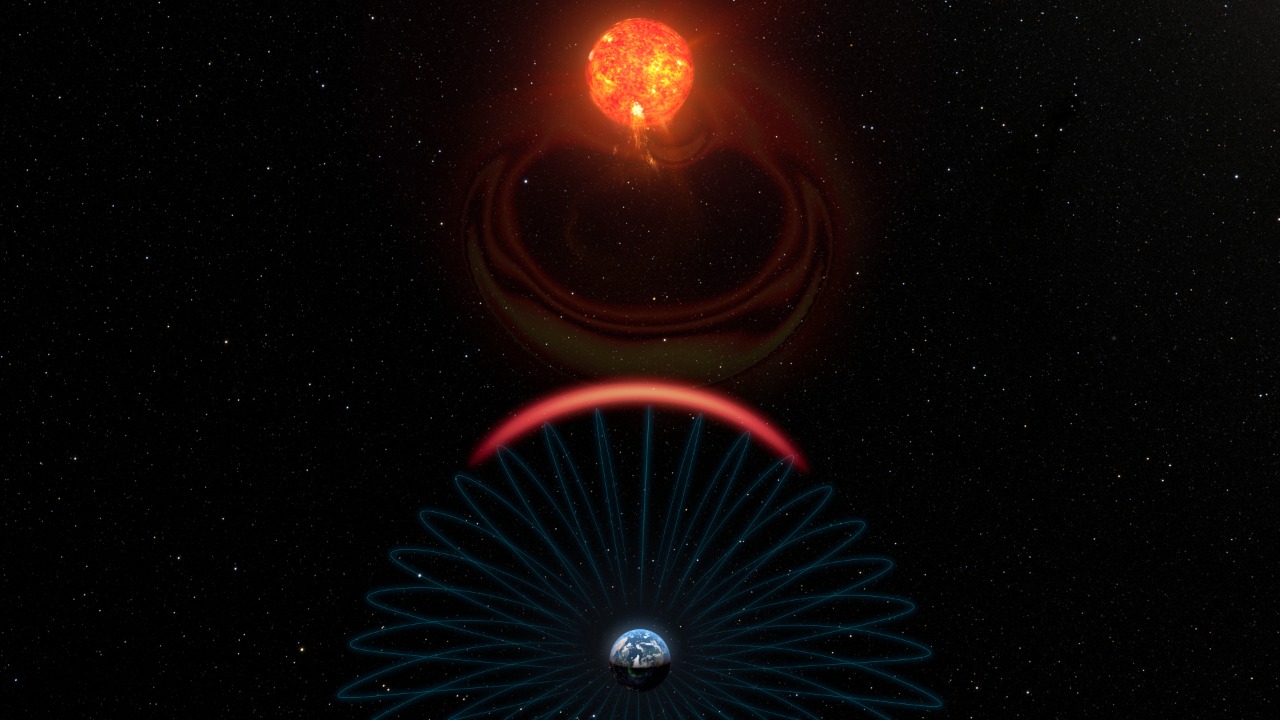
The Earth’s magnetic field is an ever-changing force, and recent studies suggest we may be closer to a magnetic field reversal than previously thought. This phenomenon, where the magnetic north and south poles switch places, has intrigued scientists for decades. Understanding what a magnetic field reversal entails and its potential impacts on our planet is crucial as we approach this possible event.
Understanding Earth’s Magnetic Field

The Earth’s magnetic field is generated by the movement of molten iron in its outer core. This dynamic process, known as the geodynamo, is responsible for creating the magnetic field that extends from the Earth’s interior out into space. The molten iron, influenced by the planet’s rotation, generates electric currents, which in turn produce magnetic fields. This complex interaction maintains the magnetic field, protecting the Earth from harmful solar and cosmic radiation.
Historically, the Earth’s magnetic field has undergone numerous reversals, with the north and south poles switching places. These reversals, occurring every few hundred thousand years, are well-documented through evidence found in rock formations and ocean floor studies. By examining the alignment of magnetic minerals in these rocks, scientists have been able to map out the timeline of past reversals, offering insights into their frequency and duration over geological time.
Current Indicators of an Imminent Reversal

One of the most compelling indicators of a potential magnetic field reversal is the recent rapid movement of the magnetic north pole towards Siberia. This shift, which has accelerated in recent years, poses significant questions for navigation and technology. As the magnetic north moves, the accuracy of compass-based navigation systems, which are reliant on the magnetic field, can be compromised, affecting everything from maritime travel to smartphone GPS functionality.
In addition to the shifting poles, there has been a notable decrease in the strength of the Earth’s magnetic field over the past century. Observations indicate that the field is weakening at a rate that could suggest an impending reversal. The potential correlation between the weakening field and a reversal raises concerns about the timing and impact of such an event.
Implications of a Magnetic Field Reversal

A magnetic field reversal could have significant implications for technology and infrastructure. Satellite communications and GPS systems, which rely on stable magnetic fields for accurate positioning and timing, might face disruptions. Additionally, power grids and electronic devices could experience interference due to changes in the magnetic field, highlighting the need for robust systems capable of withstanding such fluctuations.
The biological and ecological effects of a reversal are equally important to consider. Many animals, such as migratory birds and sea turtles, rely on the Earth’s magnetic field for navigation. A reversal could challenge their ability to adapt, potentially affecting their migration patterns and survival. Furthermore, changes to Earth’s radiation belts and atmospheric dynamics could have unforeseen consequences on climate and weather patterns.
Scientific and Public Response

Advances in predictive modeling are crucial for understanding and preparing for a magnetic field reversal. Scientists employ a variety of tools and technologies to monitor changes in the magnetic field, including satellite observations and ground-based measurements. International collaborations play a vital role in studying geomagnetic phenomena, enabling a comprehensive understanding of the factors driving these changes.
Preparing for the potential impacts of a magnetic field reversal requires strategic planning and public awareness. Strategies to mitigate risks to infrastructure and technology are essential, ensuring that systems are resilient to magnetic fluctuations. Public education initiatives are also important in addressing misconceptions and providing accurate information about the nature of magnetic field reversals and their potential effects.
The Future of Earth’s Magnetism

Long-term forecasts of magnetic field reversals are fraught with uncertainties, as predicting the exact timing and consequences of such events remains a significant challenge. Continued research and observation are necessary to refine models and improve our understanding of the processes involved in magnetic field reversals. This ongoing effort is critical for anticipating potential impacts and developing effective mitigation strategies.
The study of Earth’s magnetic field extends beyond immediate practical concerns, offering broader insights into the planet’s geological processes and history. Understanding magnetic field dynamics contributes to our knowledge of Earth’s interior and its evolution over time. Additionally, these studies enhance our understanding of other planets’ magnetic fields, providing valuable context for planetary science and exploration.